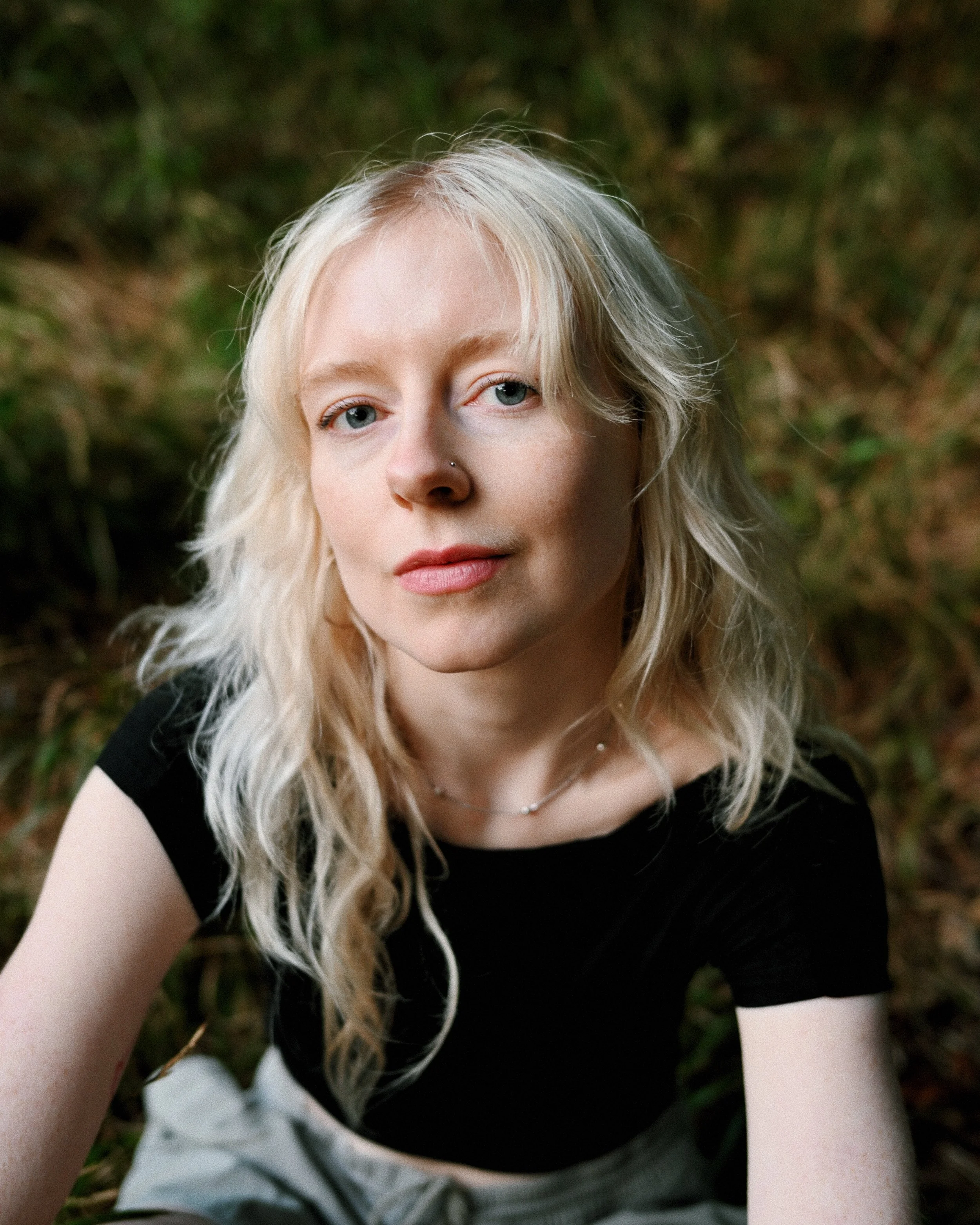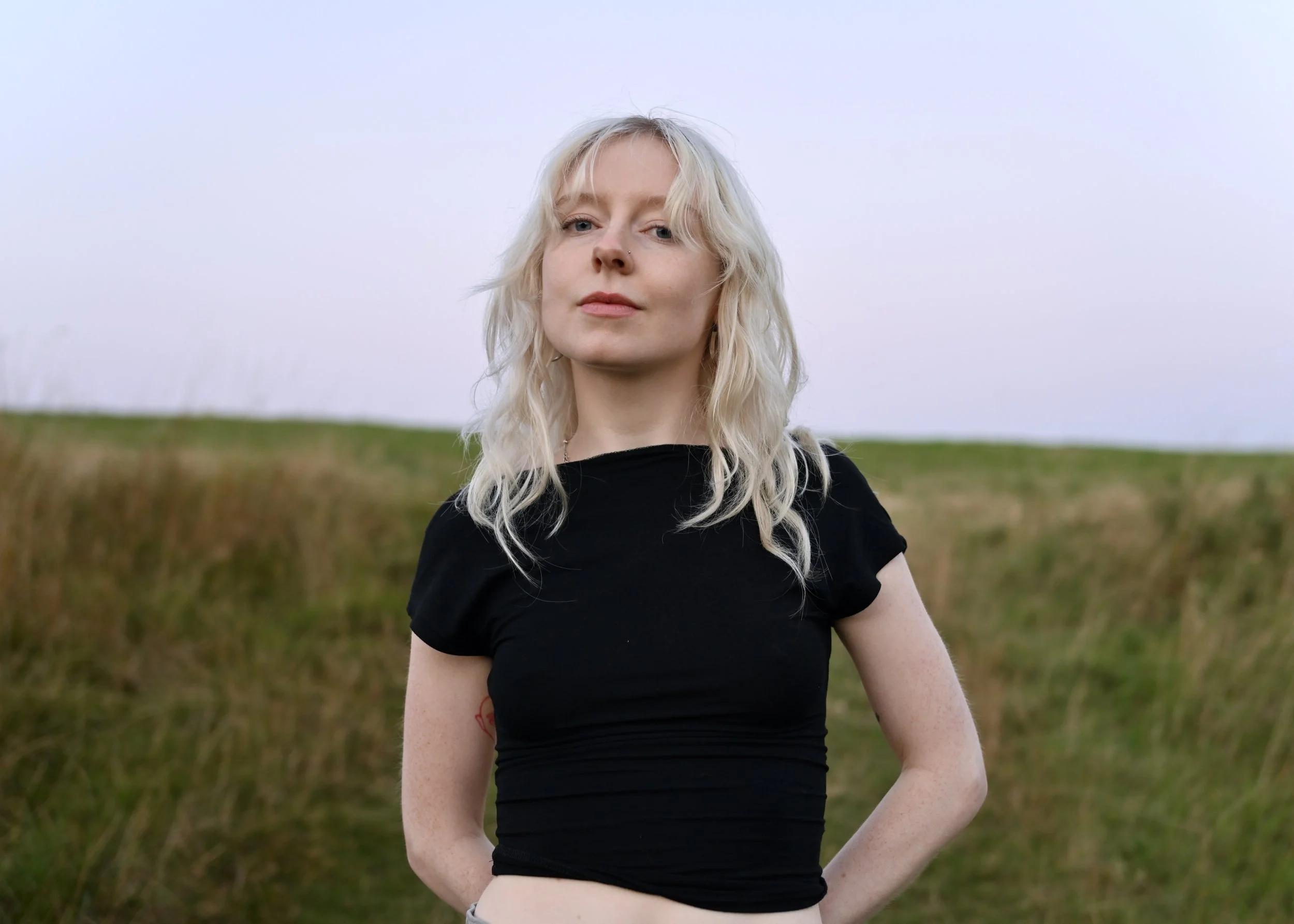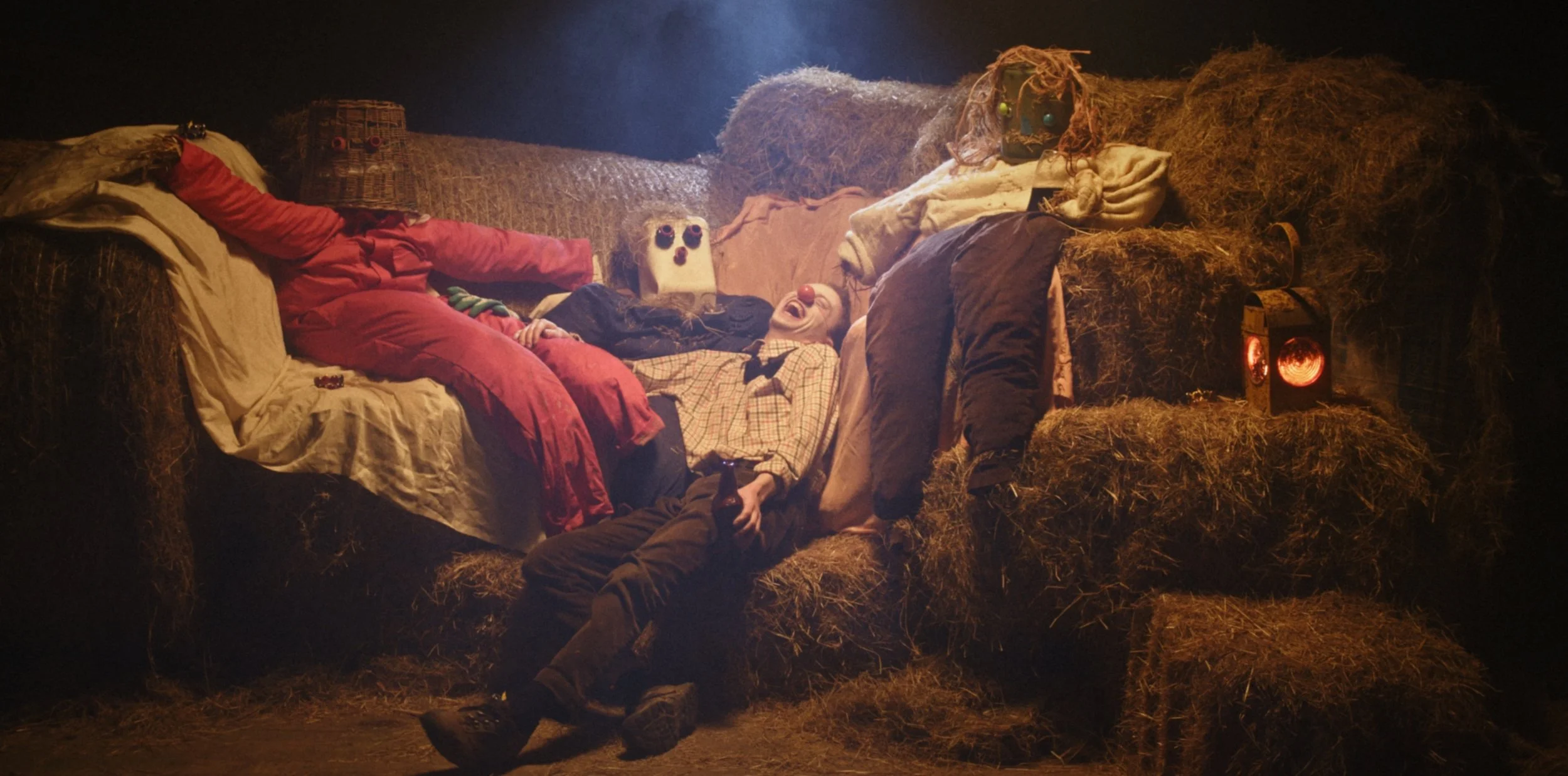FTGT: Interview: Pippa Molony
©Stephen J Hartigan
Pippa Molony is a musician and filmmaker from Dublin. Her solo work and collaborations layer ethereal vocals over experimental electronic melodies, contrasting the mellower output of alternative folk 2 piece ‘Barnburner’. Haunting and cinematic, 2024’s ‘Hungry Ghost’ is an EP directing a spiralling focus on the themes of dreaming, longing and consumption.
C: Who are you?
P: Pippa Molony!
C: How would you describe your music?
P: Overall, I would say that it is mostly experimental, atmospheric electronic music with some irish trad influence. But I have been working on more pop stuff lately and messing around with various genres. A lot of that is down to producers I work with, like Rory Sweeney.
C: Was music a large part of your upbringing?
P: Yeah it was, actually. As a child, I played the fiddle for about six years, and my brother and sister played some trad as well. Learning an instrument and music in general was really encouraged in my house, my mum's quite musical (she plays a few instruments). When I was in primary school, I was in a children’s choir. A big reason for joining it was that the choir kids got to miss days off school for competitions and go to McDonald’s if we won anything. I think thats where singing came into the equation for me.
C: Who are some of your greatest influences?
P: I have a lot of different influences, Joni Mitchell has always been there. I don’t think you would ever link her to my music, at least not my solo music, not obviously, but I love her confessional lyricism, vocal expression and melodic approach. I listened to “Blue” religiously when I first heard it and will come back to that album at different stages of my life and fall in love with it all over again. Her vocal melodies are unconventional. I think she’s a genius.
James Blake was an early discovery that I really liked. Maybe he is an influence. Maybe so are Jenny Hval, Eartheater, Serpent with Feet, Jockstap, Oklou, Sinéad O’Conner, Kate Bush, Tirzah, ML Buch…
C: In your view what is the best outcome of creating art?
P: Personally for me, it's a needed form of release. The making-melodies or playing music part is more of a joy, an outlet, a fun and rewarding thing to do with my time.
But making art, be it music or writing or film, has always been a way for me to communicate a feeling - or work through a feeling. Even if I am not entirely sure what that feeling or emotion is. At least the writing process is like that. A lot of it is feeling out an unsolved problem in my head, or a strong emotion, and to make sense of it.
©Luke Conroy
I can't think of anything more satisfying than beginning, following through and finishing something and having it be out in the world. Making something tangible: to be enjoyed, chewed on, maybe moved by or at the very least, to be shared and experienced by someone other than myself.
I think one of the jobs of making art is to reflect problems, ideas, questions and convictions about the world back to us, and hopefully present solutions or perspectives. There's a lot of value in that, and a lot of scope for change.
C: for the hungry ghost EP you’ve credited Haruki Murakami for the lyrics of “A woman lies in bed asleep”, I'd be interested to know which book this is from and what drew you to that section
P: It's from his book ‘After dark’, he's a really cinematic author. I confess I haven't quite read that book but I used some of that text when I was forming the melody to that track. When we were making it, I was improvising with a lot of different texts from books on Rory Sweeney’s bookshelf (who I created the EP with). I like to have things around me when I'm improvising vocals, just so I have a jumping off point melodically.
It is sometimes hard for me to feel totally comfortable when I am laying down vocal melodies and lyrics with someone else around. It is a very personal thing for me. Even though I feel totally comfortable around Rory, I do find that going to an emotional place with my vocals or delivery does feel rather confessional at times and quite vulnerable. I get self conscious. So, when still in the ideas phase, I sometimes like to use texts to prompt ideas and feelings, inspiring where the melody goes, giving this foundation that keeps me out of my head about forming lyrics on the spot. It's how a lot of the songs in my EP, Hungry Ghost were formed, whereas my process is a little bit different now. In general though, I'm someone who likes to sit with my writing afterwards, with my lyrics, and re-write them again, to create meaning from them.
©Luke Conroy
C: Dreams are a common theme of the EP, what would you say the significance of dreams are to you and to the music?
P: For me, dreams are really significant, I like to keep a dream journal. I mostly record them when I wake up in the morning, and revisit them after a period of time to try and untangle the meaning of my dreams based on where I was in my life when I had them. It's hard to tell the day after you dream what your subconscious is telling you. Looking back at them with some time behind you can tell you a lot about how you were really feeling at a certain time. Dreams are so personal, often quite bizarre and senseless. For Hungry Ghost, and my music in general, I find dreams to be a great form of inspiration.
Overall though, this album is loosely about consumption. The hungry ghost is a creature in buddhism which has a tiny, tiny neck and enormous belly - roaming the earth never feeling full. It eats and eats and eats but can never feel full. I was exploring ideas of escapism. Desire. Addiction. Even if it is not obvious for the listeners, the overarching theme, for me, is this idea of overconsumption. Always needing more, always yearning for something and desiring intensely, trying to escape the present moment, daydreaming about entering another world entirely (and dreaming of literal otherworlds that you can see in your mind). In the song ‘Falling’, there's a very extreme feeling of desire for someone, and it's that extremity that's interesting to me.
C: You've explained the title of this EP as being a reference to the realm of hungry ghosts in Buddhism, is this something you practice or just something you're interested in?
‘angels’ music video
P: It's not something I practice, but it's something I would love to learn more about. I definitely think a lot of early Buddhist texts and teachings are richly valuable today, ironically now more than ever. I love the author and speaker Gabor Maté, who has a book called ‘In the Realm of Hungry Ghosts’ which is about addiction. He explains the concept of the Hungry Ghost in that book. I'm interested in addiction anyway. I think a lot more people than we think are addicted to something, will or have been, convenience culture sets us up to be. and I find the Hungry Ghost creature so captivating and a perfect allegory for the addictive mind.
The concept of the hungry ghost is as old as the earliest Buddhist texts, which is insane to me. Actually, the idea of Preta (hungry ghosts) has roots in ancient Indian culture, which predates Buddhism - so the idea of this creature is literally thousands of years old. I think in today’s world, or at least in the capitalist chronically-online world I live in, the hungry ghost is as relevant as ever. Many of us are working, working, working, buying, buying, buying, consuming, consuming, consuming. But that is not living.
C: The album has strong themes of folk-lore, hauntology and ghosts. What can you say about this and are there any stories, places or hauntings in particular which inspire the EP?
P: I found myself scrolling around on Dúchas.ie, the national folklore archive, a lot at the time of making the EP. I was obsessed with stories from the School's Collection particularly (it is an archive of local stories, recipes, folklore, cures and cautionary tales recorded at the turn of the century). I’m not the only one obsessed, The Pisróg’s Podcast directly uses it for their podcast material (listen to it, it’s amazing).
The song ‘Angels’ was directly inspired by a story I found there of a woman looking out of her window and seeing these angels (or fairies) dancing, all the while encapsulated in this supernatural blue light. I imagined I was this woman, expanding on it, desiring to escape into this other realm to be with these kind of inviting (but equally terrifying) beings. To leave everything to go and join them.
Another song, Hungry Ghost (the title track), features a piece of text from Kim Stanley Robinson's “The Years of Rice and Salt”. I just thought the passage was so beautiful. It describes feelings about feelings: the protagonist's amazement at the fact that they can feel so little being back in the place that was once their home. A place which holds such significance, so many memories, and yet, they are numb. The lyrics in this song are all the author’s words, not mine, but he actually gave me permission to use them - which is cool.
C: In terms of Barnburner and your other collabs , how would you say the creative process differs from your solo work?
P: With Barnburner it is different. Differently similar. Barnburner is mostly me and my friend David Mac Dhubháin, but our friend Dan O’Brien has been helping us produce it, and we have collaborated with a few other musicians to create the recorded sound. I was in school with David and our music tastes would be very different actually. But there are places where it overlaps, which is very much felt in the music. To make our songs, David usually comes up with a guitar riff and brings that to me, and then we improvise on that. You can't predict what will happen in the moment. If my phone's recording during an improv session, that's great, because often we generate some songs from those iphone recording ideas.
For my solo music, something I'm working on right is a piece of work that is almost all organically made by myself. Just to try that. Because usually I prefer collaboration. It is just so exciting. It is so satisfying to create music with other people. With my EP, you know, I could never do what Rory Sweeney does. He inspires me so much, and his production can be so unpredictable - which is exciting then for me, when I am approaching a melody. You come at making things together from completely different perspectives, and with completely different influences. I think what's really interesting is that sweet spot where they all combine and compliment each other.
I get really energised working with people, I find it so much easier to make something when I am working with someone else. David might make a really glonky riff, or Rory might create a bonkers synth score and I think how is a song going to come out of this? What is my role in this? How can I make it work? That is where the magic is in making music.
C: What has been your favourite music video to work on and what is the process of writing like to give music a visual representation?
P: I love music videos for so many reasons. I loved making the ‘Full Plate’ music video for ‘Ahmed, with Love. Covid was still around and there were only four of us making this music video together, excluding the cast, but it was really fun. Super relaxed and very run and gun. In music videos anything goes, it doesn't have to make sense.
In film school, I was taught a very specific way of organising ourselves for film production, a very “time is money” approach, with military-esque schedules. But Full Plate did not follow this approach at all, It was quite improvisational, and we were shooting with natural light at sunrise and sunset which was beautiful. Things did not always go to plan, but we were happily surprised with random things that you couldn't have predicted, we went to the park and all these deer crowded around Kareem and Khaki Kid.
For my own music, I loved making the “Angels” music video for similar reasons. I was working with my friends and it was all super collaborative. There was no single director on that music video. Myself, Rory, my friend Cian and Cormac created, shot and edited it all together. My best mates, sister and Cormac’s girlfriend performed in it with me, we shot on super8 film and found this incredible light… We were lucky with the light. The making of it felt magical, and it was similarly improvisational. Almost childlike. The environment made the art better because things weren't being forced, ideas and moments were just happening organically, because we allowed ourselves to be open to them.
‘St.Johns’ music video
C: How would you describe your approach to filmmaking
P: I’m quite detail oriented. I like to spend a lot of time preparing, pre-visualising, and discussing ideas. Maybe it’s because I run a little anxious. But when I am on set, I do try to roll with the punches and keep myself open to ideas. Being organised in advance helps me to be able to do this, funnily.
Because of where I'm at in my life, I'm not creating either music or film full time. I'm making when I can, with the means I have and I'm not working full time in either industry. When I have the opportunity to make a film or music video, I try to throw all I possibly can into the project, because I don't know when I'm going to get the chance to make something again.
Mostly, I want to make something I really believe in. If I believe in a project, that will translate on screen. I value my time a lot and what I want to do in film is create meaningful stories, challenge the audience a bit, ask questions. The way I want to gain that experience is just by doing it, at my pace, for the right projects. Even if it's a little DIY, creating things myself feels more beneficial to me than getting people coffee and doing odd jobs in an ‘industry’ job. I like having creative control, if I am being completely honest…
C: If you could leave us with a quote, or a piece of advice what would it be
P: “It's the duty of art to ask questions, not to provide answers” - Michael Haneke






